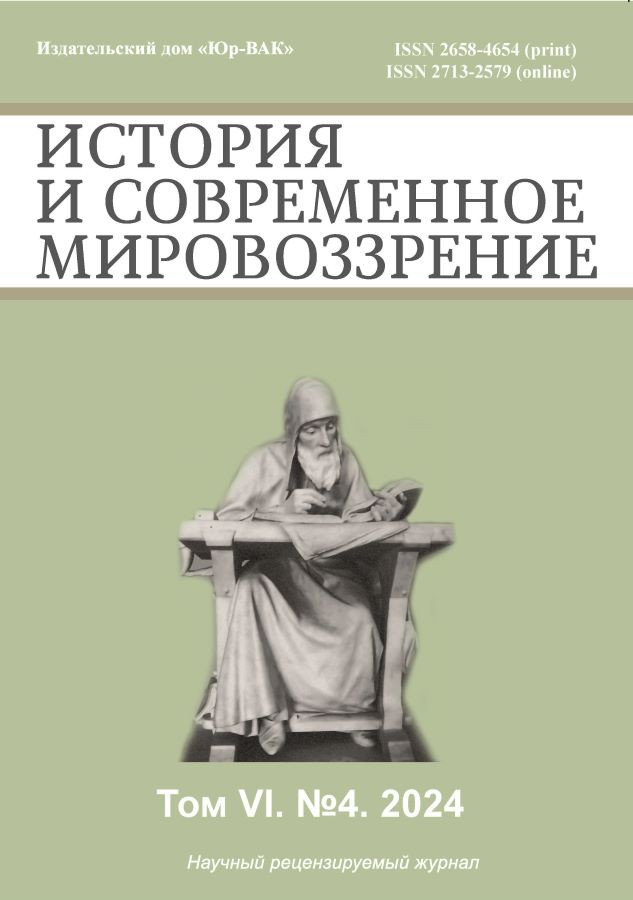Стратегия лейбористской партии Великобритании и тред-юнионов в условиях социально-экономического кризиса рубежа 1910-х–1920-х гг.
- Авторы: Бортулёв В.Е.1
-
Учреждения:
- Брянский государственный университет имени академика И. Г. Петровского
- Выпуск: Том 6, № 4 (2024)
- Страницы: 74-80
- Раздел: ДИСКУССИОННЫЕ ПРОБЛЕМЫ ВСЕОБЩЕЙ ИСТОРИИ И МЕЖДУНАРОДНЫХ ОТНОШЕНИЙ
- URL: https://journals.eco-vector.com/2658-4654/article/view/650915
- DOI: https://doi.org/10.33693/2658-4654-2024-6-4-74-80
- EDN: https://elibrary.ru/KTNIYU
- ID: 650915
Цитировать
Полный текст
Аннотация
В статье анализируются сложные социально-экономические процессы, происходившие в Великобритании в первые годы после завершения Первой мировой войны, а также стратегия Лейбористской партии по решению возникших проблем, ставшей к тому моменту одним из ключевых элементов британской политической системы. Предметом исследования являются подходы лидеров этой партии и тесно связанного с ним руководства крупнейших тред-юнионов к решению возникших в послевоенный период трудовых конфликтов, а также вопросов, связанных с улучшение социального положения рабочих в ключевых отраслях британской промышленности. Автор отмечает, что к моменту завершения Первой мировой войны Лейбористская партия, позиционировавшая себя в качестве выразителя интересов не только рабочих, но и представителей широких слоев британского общества, выдвинула программу широких преобразований в социально-экономической сфере, включавшую расширение системы социального страхования и трудовых прав, активизацию участия государства в регулировании социально-экономических процессов, а также национализацию некоторых ключевых отраслей британской промышленности. Вместе с тем достижение данных целей виделось большинству лейбористов исключительно посредством парламентских методов политической борьбы и переговоров с правительством. По итогам рассмотрения автор приходит к выводу о том, что руководство партии пыталось использовать возникшие после мировой войны социально-экономические трудности для укрепления своего политического влияния и расширения своей электоральной базы. Вместе с тем опасения лейбористов относительно возможной радикализации рабочего движения привели к слабости и непоследовательности партийной позиции в отношении возникших в данный период трудовых конфликтов. Противоречивость социально-экономической стратегии Лейбористской партии стала одним из факторов быстрого падения первого лейбористского кабинета уже в 1924 г.
Полный текст
Об авторах
Владимир Егорович Бортулёв
Брянский государственный университет имени академика И. Г. Петровского
Автор, ответственный за переписку.
Email: bortulev.vladimir@yandex.ru
аспирант
Россия, г. БрянскСписок литературы
- Adelman P. The Rise of the Labour Party: 1880–1945. London; New York: Routledge, 1995. 144 p.
- Before Beveridge: Welfare before the Welfare State. Choice in Welfare. London: Institute of Economic Affairs, Health and Welfare Unit, 1999. 146 p.
- Butler D., Butler G. British Political Facts. Basingstoke: Palgrave Macmillan, 2011. 541 p.
- Cook Ch., Stevenson J. The Longman Handbook of Modern British History. L., 2001. 506 p.
- Harris B. The Origins of the British Welfare State: Society, State and Social Welfare in England and Wales, 1800–1945. Basingstoke; New York: Palgrave Macmillan, 2004. 402 p.
- Kellogg P. U., Gleason A. British Labor and the War: Reconstructions for a New World. Charleston: BiblioLife, 2009. 516 p.
Дополнительные файлы









